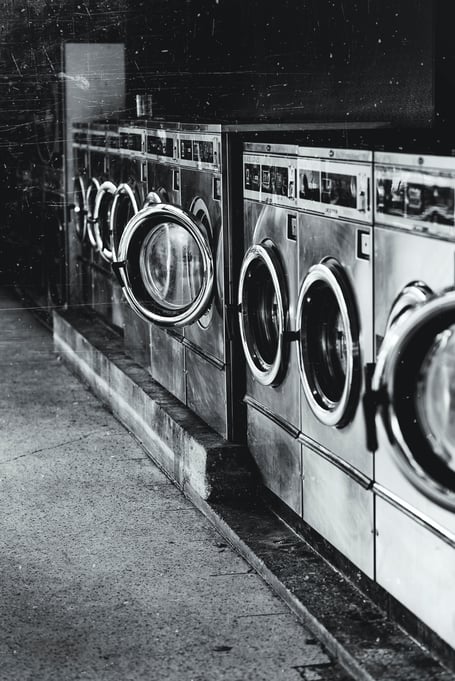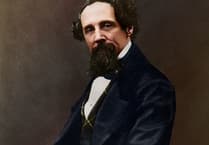There are many inventions now taken for granted that have truly transformed our lives in Britain. One of these is the humble washing machine.
Traditionally laundering by hand had involved soaking, beating, scrubbing and rinsing the dirty clothing. We should not forget that before modern day plumbing, the water used had to be obtained in pails from a pump or well before then being heated by fire and finally poured into a tub. Undoubtedly, it was very time consuming. For centuries, washing clothes had been considered as ‘woman’s work’ and Monday became ‘washing day’. Victorian advice on housekeeping routines specified Monday so that everything could be dried, pressed, aired and folded well before Sunday, the day of rest, with clean clothes for church. Although fundamentally a labour-saving device many social historians have now concluded that in terms of its impact on the liberation of women the washing machine should be considered as the greatest invention of the industrial revolution.
Surprisingly, the first English patent for a washing machine was issued as long ago as 1691. In 1782 Henry Sidgier obtained a British patent for a rotating drum washer and by the 1790s Edward Beetham had already sold numerous "patent washing mills". All of these early designs consisted of a drum washer that was hand-cranked to make the wooden drums rotate. Later metal drums replaced the wooden ones allowing the drum to be turned above an open fire significantly raising the water temperature. In 1862, at the London Exhibition, a patented "compound rotary washing machine, with rollers for wringing or mangling" was exhibited by Richard Lansdale. Advances continued to be made. In the USA, the Whirlpool Corporation started producing electric motor-driven wringer washers in 1911. By the 1930s, with concern for electrical and mechanical safety, washing machines were built in a cabinet. Spin dryers were also introduced to replace the dangerous power mangles. Washing powder, as we know it today, hit the market in 1933. It was known as Dreft. Bendix introduced the first domestic automatic washing machine in 1937. In appearance it was not unlike the front-loading automatic washers produced today but it was very expensive.
Electric washing machines did not become popular in the UK until the 1950s. Several manufacturers produced semi-automatic machines with two tubs, one for washing and a smaller tub for water extraction or centrifugal rinsing. Later, to aid automation, Hoover machines introduced “keymatic” cartridges to program different wash cycles. Since the early 1990s upmarket machines have incorporated microcontrollers for the timing process and in the C21st we have seen touchscreen control panels. Washing machines now display an EU Energy Label with grades for energy efficiency, washing performance and spin efficiency. Washing machines, of course, remain one of the biggest consumers of energy in a modern home.
While in Britain we can acknowledge that the washing machine has been a positive force in improving the position of women in society we should never forget that we live in an advanced country. Many in the Third World still hand-wash their clothes.




Comments
This article has no comments yet. Be the first to leave a comment.